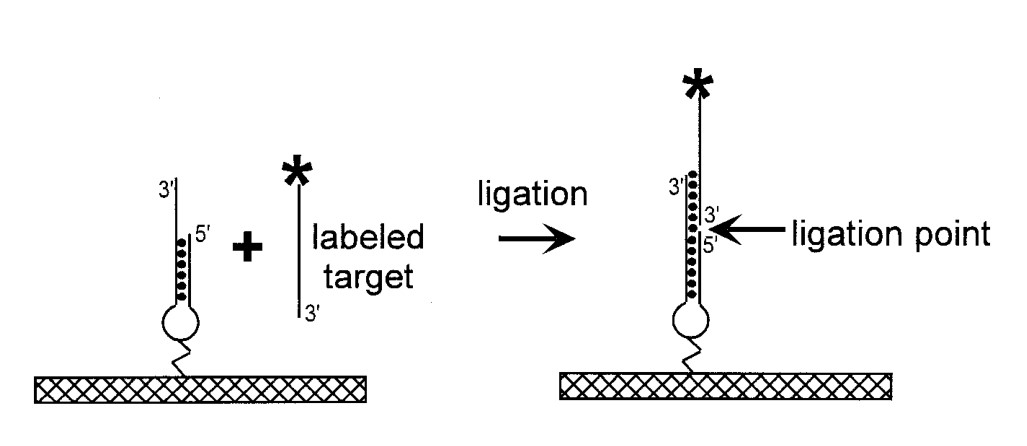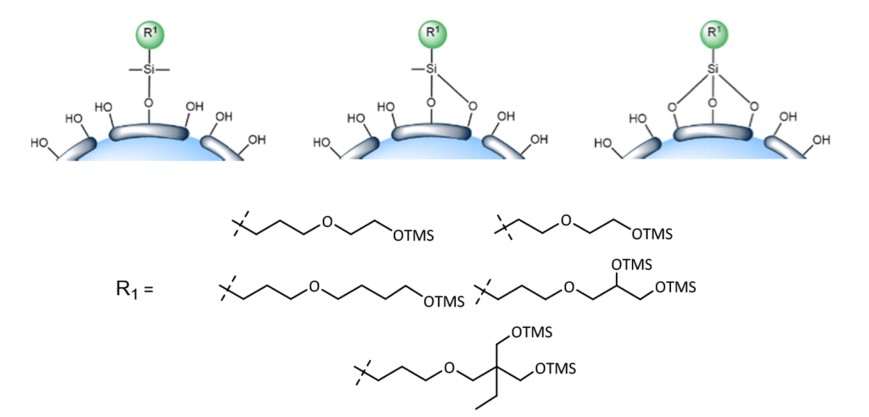Creative Biolabs is committed to providing industry-leading nucleic acid/oligonucleotide chip conjugation services to our customers around the world, our outstanding scientists are always ready to analyze, evaluate your projects, and provide you with the most reliable and comprehensive services.
Gene chip technology refers to the immobilization of oligonucleotide probes or gene fragments on a solid surface in a specific order, structure or quantity, followed by hybridization of fluorescently labeled DNA/RNA samples with oligonucleotide probes and optical means. This technology is widely used in gene sequence analysis, gene diversity and variation detection, disease diagnosis and prediction, drug screening and other fields. Compared with traditional instrument detection methods, gene chip detection has the advantages of higher throughput and lower sample requirements. The chemical covalent immobilization of oligonucleotides on the surface of the solid substrate can reduce the desorption phenomenon during the hybridization process. Currently, the commonly used immobilization materials are as follows:
 Fig 1. Stem-loop DNA probes immobilized on a surface.2
Fig 1. Stem-loop DNA probes immobilized on a surface.2
Glass and silicon wafers are the main materials of traditional gene chips due to their high hardness and processing precision. The surface of the glass slide can be hydrolyzed to form silyl hydroxyl groups and react with various organic reagents to introduce active functional groups such as amino groups, hydroxyl groups, and carboxyl groups on the surface, and then conjugate them with chemically modified oligonucleotides through cross-linking reagents. In addition, the surface of the slide was modified with acryl and acrylamide or dimethyl acrylamide, which could be coupled with aldehyde- or amino-modified oligonucleotides, respectively. Supports immobilized by this method tend to have higher immobilization capacity and can immobilize oligonucleotide probes of different lengths at specific sites.
 Fig 2. Silanization of various silicas with functional alkoxysilanes.1
Fig 2. Silanization of various silicas with functional alkoxysilanes.1
With the advancement of precision processing technology, polymers with better processing accuracy and flexibility, better optical properties and low cost are also used as potential and great use-value gene chip substrate materials. Polypropylene and polystyrene are currently the most commonly used supports for permanently anchoring oligonucleotides. In the presence of high concentrations of salts or cationic surfactants, DNA fragments can be immobilized directly on porous polystyrene plates by UV cross-linking. N-hydroxysuccinyl functionalized Penta fluoro benzene azide is blocked on the surface of polystyrene, and NHS-activated succinyl ester can be introduced after UV irradiation, which can be used to immobilize peptides, proteins or DNA.
Surface modification of metals and conjugation of nucleic acid molecules can meet the unique implant needs of certain medical indications. By growing an anodized layer on the surface of titanium alloy, the ends of nucleic acid single strands can be electrochemically immobilized and can be hybridized, labeled with complementary strands at physiological pH.
Many studies have found that the steric hindrance between the individual oligonucleotide probes immobilized on the support can seriously affect the hybridization efficiency of the analyzed sample and the probe. To address this problem, arm molecules of different molecular lengths, charges and hydrophobicity have been developed. For example, silane reagents such as EDA and DETA are used for modification, multi-step condensation of linking molecules such as polyethylene glycol, MBS, MPS is used to extend the arm length, or long carbon chains are directly used to modify conjugated oligonucleotide molecules. The introduction of arm molecules can greatly improve the hybridization efficiency.
In addition, dendrimers are also a hot topic in polymer chemistry in recent years, which can provide good biocompatibility, non-immunogenicity and water solubility. The dendrimers are first modified with glutaric anhydride and then activated in DMF using DCC and NHS to form NHS esters, which can directly immobilize the modified oligonucleotide groups. Dendrimers can provide gene chips with more active and biocompatible three-dimensional surfaces and greatly improve fluorescence intensity in hybridization assays.
Regardless of the material and fixation method chosen, the gene chip should have the characteristics of low fluorescence background signal and weak non-specific adsorption. Creative Biolabs provides stable, high-density and moderate-capacity oligonucleotide surface immobilization services. In addition to this, different support materials, chip structures, surface roughness and nucleotide sequences can also be customized. Any questions and requirements, please contact us.
References
All listed services and products are For Research Use Only. Do Not use in any diagnostic or therapeutic applications.